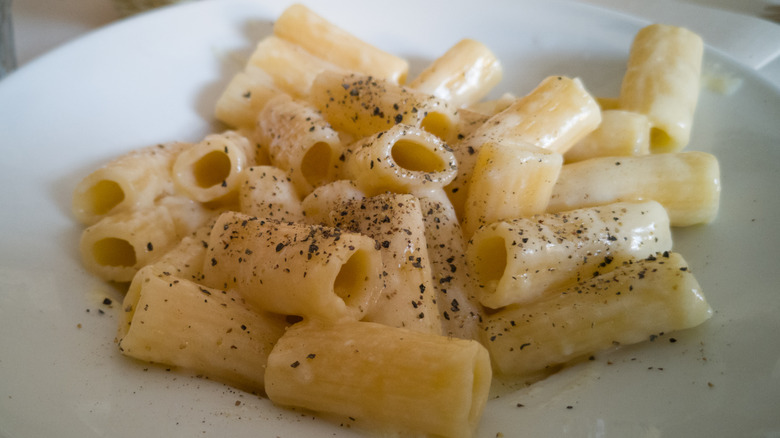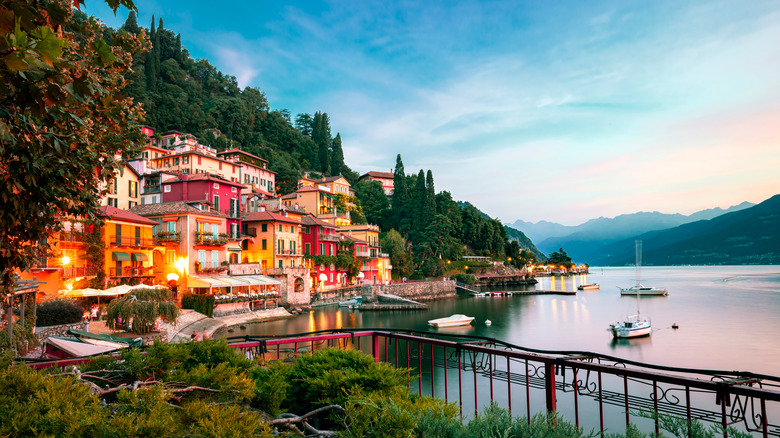The Unique Cooking Vessel Used To Make Cacio E Pepe En Vessie
The idiom stands true — when in Rome, do as the Romans do. Though the collection of words is meant to paint with broad strokes, encouraging travelers to adopt the customs and traditions of the place in which they find themselves, there really is no better way to experience The Eternal City than to go where locals go and eat where locals eat, per Carpe Diem Tours. In this case, do as the Romans do and treat yourself to a nice, large plate of cacio e pepe. This symbol of Roman food is a simple combination of three ingredients — pasta, pecorino romano cheese, and black pepper.
The meal is an homage to the humble shepherds of Rome's countryside. According to La Cucina Italiana, the shepherds needed to bring food with them into the fields that were calorically dense and lasted a long time. Cacio e pepe was perfect for this, owing to its small number of ingredients and easy preparation. All you need to do is cook the pasta and mix it together with black pepper and cheese. That's it. Modern Italian chefs have been taking cues from these simple countryside dishes, putting their own unique spin on classic dishes, per BBC. The same is true for the cacio e pepe served at Lido 84, though the choice of the cooking vessel may surprise you.
Old technique, ritzy location
If you were sitting at a fancy restaurant on the shores of beautiful Garda Lake in northern Italy, you likely wouldn't expect to be served cacio e pepe at all given your distance from Rome. And you certainly wouldn't expect it to be served to you encased in a pig's bladder. Don't run away, that would be rude. While the outward appearance of a ballooned bladder does not look nearly as appetizing as what's hiding inside, utilizing an animal's internal organs as a vessel for cooking is nothing new. The ancient Romans were among those who frequently used animal innards as food-cooking vessels. The technique is now employed by chef Riccardo Camanini at his luxury restaurant, Lido 84 (via Four Magazine).
Camanini is among a slew of Italian chefs who are bringing their nation's beloved cuisine back to its roots. And cacio e pepe cooked in an inflated pig's bladder is taking things way back. The technique is simple. According to BBC, Camanini uses the bladder of a female pig, more roomy and flexible you see, and stuffs it with pasta, in this case, rigatoni, pecorino romano cheese, and black pepper. The bladder is sealed and set over simmering water to inflate, gently cooking the pasta as it does so. The finished product is served table side. The bladder is peeled back to reveal a beautifully creamy, peppery, mildly acidic pasta that is sure to please even the most critical of guests.

